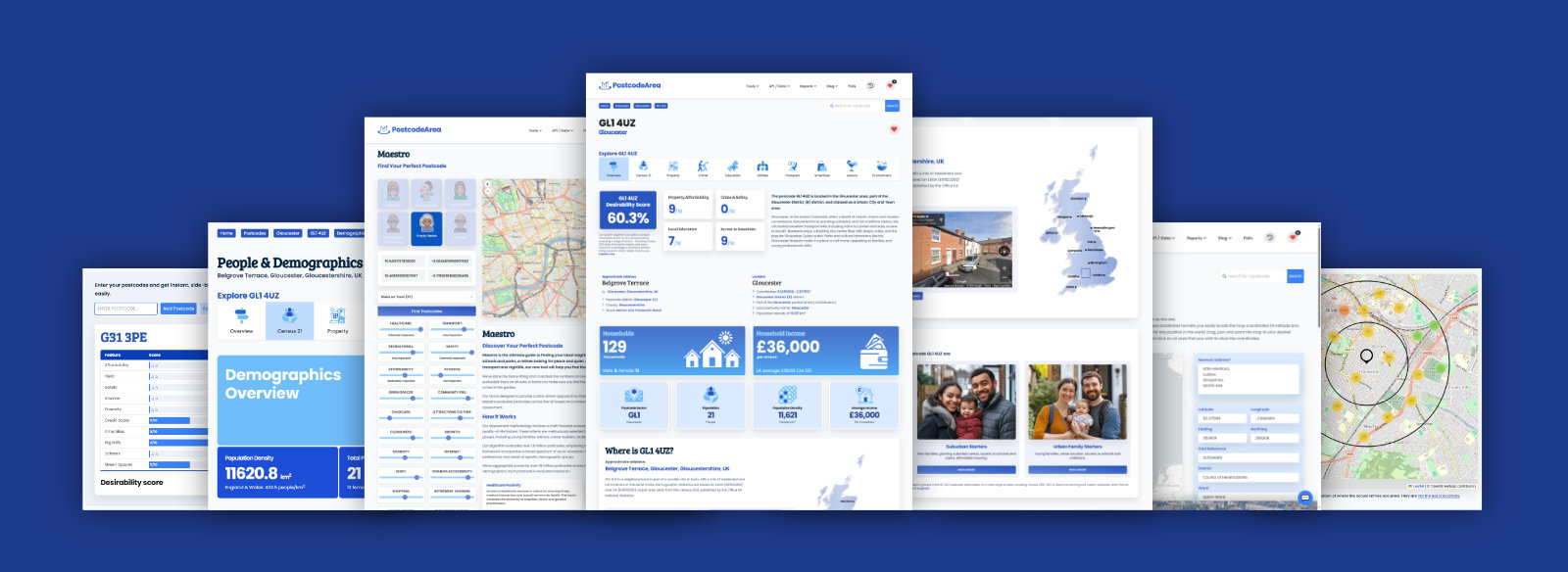History of the UK Postcode
Medieval Times
The Royal Mail is able to trace its history right back to medieval times. Back in the 15th century letters addressed to the King and Queens of England were carried by couriers. The first mention of a Master of the Posts was in the King's Book of Payments in February 1512, for which a payment of the grand sum of £100 was authorised to be paid to the Master of the Posts.
In 1609 it was laid down that mail could only be carried and delivered by persons authorised by the Postmaster General, and in 1635 the Royal Mail service was made available to the public, announced by Charles I, and operated by Thomas Witherings, an English merchant and politician. In the 1640's the monopoly was given to Edmund Prideaux, parliamentarian and lawyer who eventually became attorney-general.
An act introduced in 1657 introduced a new system for Britain, which was entitled "Postage of England, Scotland, and Ireland Settled". The General Letter Office was established in 1660, later renamed the GPO (General Post Office), and a similar system in 1707 in Scotland.

Picture of Edinburgh and London Royal Mail delivery by horse, painted by Jacques-Laurent Agasse.
The first Royal Mail coach ran in 1784, and operated between the cities of London and Bristol. At this time the Post Office Investigation Branch was introduced, and claims to be the oldest recognised criminals investigations authority in the world. The first Royal Mail train ran in 1830 on the Liverpool and Manchester Railway.
Victorian Era
Stamps used as postage rates were first seen in 1839 after a reform of the uniform penny postage. Originally a single rate for delivery was in operation, but following the Uniform Fourpenny Post reform it was decided that postage had to be pre-paid by the sender, with the world's first adhesive postage stamp introduced in 1840. At that time the Penny Black was first used on the 6th May, featuring a profile of Queen Victoria.
This remained the status quo for over two hundred years, when in 1969 the GPO was abolished in an act called The Post Office Act 1969, which stated that a new public authority was to be created, governed by a chairman, and called the "Post Office". The Postmaster General was replaced with a new position - Minister of Posts and Telecommunications.
Electromechanical Sorting Machines
In the 1950's The Post Office started using electromechanical post sorting machines to help speed up the process of sorting mail. These machines processed letters, presenting an item of mail to a human operator, who would then sort the letter into the appropriate 'bin'. The addition of postcodes sped up the process, and no longer meant that the operator had to remember the correct sorting for the mail.
In 1967 the addition of 'outward codes' were first seen - initially in Croydon, London. The codes consisted of the first three characters (known as the inward code), a space, then the last three characters, which formed the basis of the modern postcode.

An automated Royal Mail postal sorting machine, known as the Segregator Drum, located at the British Postal Museum & Archive Museum Store. © Mike Peel
When it was expanded across the country, any existing postal districts were incorporated into the new system. For example, postcodes such as Liverpool 8 became L8, Glasgow C1 became G1 etc. In 1917 London districts were also incorporated into the system, and the remaining 60 percent of Greater London were given new allocated postcodes under the system.

The first batch of Morris Minor Post Office vans, first introduced in 1932 to deliver small quantities of mail in rural areas and towns. © Julie Fennell
Modern Times
First introduced by the Royal Mail (then called the GPO - General Post Office), UK postcodes were created for several reasons. They were primarily introduced to help sorting offices categorise the postal mail, however they were also helpful for calculating insurance premiums, aggregating census statistics, and for designating coordinates for route planning devices. These alphanumeric postcodes were introduced across the UK during a 15 year trial period that spanned from 1959 to 1974.
However, this wasn't the first time that postcodes were used. In 1857 London introduced a system of subdivisions for postal purposes, which was refined in the next century in 1917 that also saw numerical subdivisions included. The system proved popular, and was extended to other cities in the UK in 1934. These early postcodes were incorporated into the UK's postcode system when it was created in 1959.

Street name signs on Birdbrook Road, Great Barr, Birmingham, showing old "Birmingham 22" (top) and modern "B44" postcodes.
The original London postcodes were divided into 10 postal districts that represented the compass points - North, East, South and West - which included EC (East Central), WC (West Central), N, NE, E, SE, S, SW, W, and NW. In order to improve the system NE and S were removed, and during WW1 the addition of a numeric subdistrict was added.
When the postal system was found to be largely successful and well received, it was extended to other large UK towns and cities, including Manchester, Liverpool, Dublin, Glasgow. Other cities followed, and included Birmingham, Newcastle, Brighton, Leeds, Bradford, Sheffield, Bristol, Edinburgh and Sheffield.
During the winter of 1932, the Postmaster General (a Cabinet-level ministerial position in Government) approved the introduction of postcode classifications for "every provincial town in the United Kingdom large enough to justify it", so all businesses and householders were sent notification of the introduction, letting them know what their postcode district was, and a campaign was started in 1933 to encourage people to use their postcode. Every postbox had a poster asking users to include their postcode on their mail.

Mount Pleasant Royal Mail sorting office, in Clerkenwell, London's largest sorting office.

Unlock the full power of postcode insights.
Data is meaningless without context. Reveal the stories behind a neighbourhood, and make smarter decisions with data you can trust. Gain unlimited access to detailed statistics, exclusive reports, and essential tools.
PostcodeArea is grateful to our sponsors for their support.





